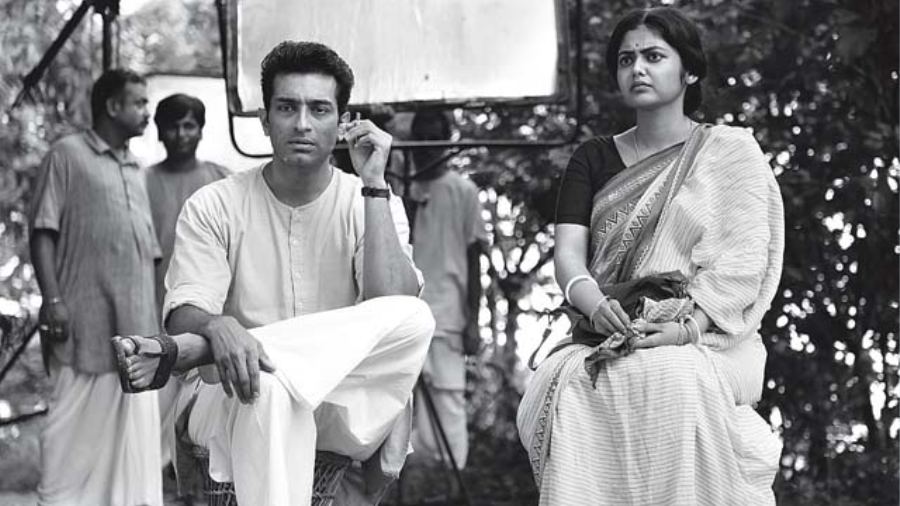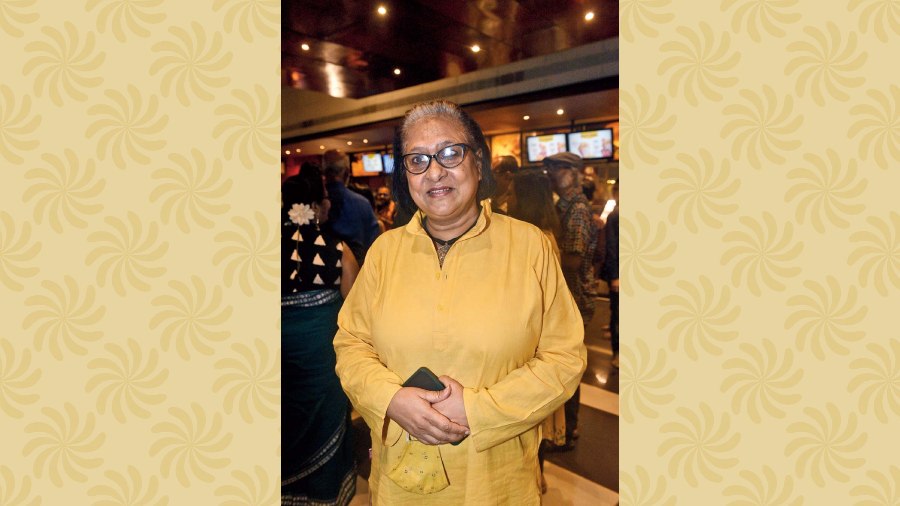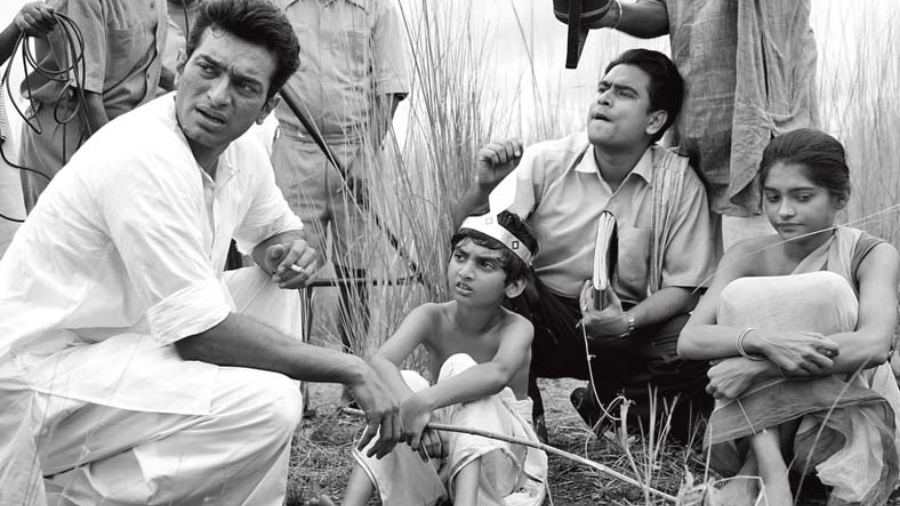Aparajito... when you search for the meaning of the word on Google, the first option says: Aparajito (The Unvanquished) is a 1956 Indian Bengali drama film directed by Satyajit Ray (1921-1992) and is the second part of the Apu Trilogy.
Anik Dutta’s film of the same name draws inspiration from maestro Satyajit Ray’s fight to victory whilst faced with innumerable challenges on the way to his first film Pather Panchali. Anik Dutta’s Aparajito in one word can be described as invincible. It is a simple tale simply told signifying the strength of passion. A passion for film-making that changed the way Indian cinema was portrayed till the mid-’50s. Pather Panchali or The Song of the Road and the making of it, its journey through the international film circuit and establishment of the ‘nouvelle vague’ in India comprises the subject of Aparajito.
For Rayphiles the film opens up a Pandora’s box full of information and anecdotes that need to be compared with their own private collections. ‘Hope’ features strongly throughout the film as Dutta’s protagonist strives to make his dream come true. There are several well-wishers, colleagues, friends and family who stand by him as they believe in him. A political force in the garb of then chief minister Bidhan Chandra Ray plays positive politics to provide Aparajito Ray (Dutta’s protagonist) the much needed funding to complete his film.
For the uninitiated, the film is a source of infotainment and inspiration that is sure to stay with them long after they leave the auditorium.
Dutta started life as an advertising film-maker. Aparajito Ray too comes from an advertising background. Both Dutta’s protagonist and he himself share an educated, cultured slightly Westernised sensibility. As a result the film has the right attitude and the near perfect settings.
The most striking feature of the film lies in casting of the right actors for the right role. Dutta worked on getting the proper characterisation out of an actor rather than running after names.
Dutta spent a lot of energy in getting his ensemble cast together. And what a master stroke he played in getting Jeetu Kamal to enact Aparajito Ray. Jeetu not only looked the part, his body language combined with his young baritone and accent gave goosebumps to many of us who had the good fortune to have met the maestro.

Moments from Aparajito
In this the actor was ably assisted by Chandrasish Ray who dubbed for him. It is enough to say Jeetu ne kaamaal kar diya. The fact that he had really done his homework and got under the real-life character’s skin was apparent in every frame. It will take him many more performances to get this heavy mantle off. But that’s for the future, at present let him bask in well-deserved glory.
Saayoni Ghosh is a natural. Her portrayal of an intelligent, supportive wife with a mind of her own came out positively. As for the other cast, it was two hours of quiz time, trying to match each one with the characters one had known or read about. While some of us enjoyed this, a few Ray specialists tried to find faults.
One felt Bangshi Chandragupta, the art director, should have been shorter, as the concerned Rayphile had read somewhere that when Ray and Bangshi walked together, Ray walked on the road while the latter took the pavement to match up to the ‘Orient Longman’ of Bengal. These perceptions are bound to be aired as Satyajit Ray is still an obsession with us even on his 101st birthday.
A number of scenes from Pather Panchali have been recreated in the film Pather Padaboli directed by Aparajito Ray. One such was the legendary rain scene. The first drop of rain fell on the bald pate of a man fishing. This was apparently an afterthought, and Ray had seen the man amongst many others in the village and had marked him out. But he had forgotten to ask him for his name. Finally, when the time came to get him for the scene, no one could identify him. Ray took to his pen and paper and sketched out his portrait somewhat like a police artist and the character was located. The film is replete with such anecdotes.
What came as a surprise for many of us was the fact that a scene was shot by Ray’s crew on their own following his instructions via a storyboard that he had drawn out. The confusion amongst the crew members when the time came to do something on their own, was so aptly rendered. Dutta in his film has been as true to the master as possible in representing the iconic scenes, be it running amongst the white grass or the first glimpse of the train’s arrival.
Dutta managed to portray the human side of the maestro too. Both his mother and his wife influenced him and were part of Aparajito Ray’s dream. It was his wife who helped in finalising the casting of Apu and Durga. It was this woman’s touch that stayed with him throughout his career. The friendship between the husband and wife has been poignantly portrayed in the spellcraft sequence, where a confusion arises about the existence of the word ‘nave’.
The authenticity and believability of the film owes a lot to the following technicians: make-up and prosthetics by Somnath Kundu, hair stylist Hema Munshi and the almost very natural costumes by Suchismita Dasgupta.
Having been involved in film-making for almost two decades one could see the dedication of these technicians and the pains they had taken in making each character appear natural and normal. The only grouse this viewer has is regarding Jawaharlal Nehru’s bald patch. It would have been circumspect to cover it with the Nehruvian headgear. But then he was indoors previewing a film, how could he have his Nehru cap on?

Kudos to DOP Supratim Bhol, who has mastered the art of black and white in a world full of colour. Abhijatrik, his earlier black-and-white film had a different hue from Aparajito. The shades of grey and black projected miraculously colourful images and incidents in our mind’s eye. Art director Ananda Addhya’s almost perfect recreations and the poignant background score by Debojyoti Mishra enhanced each moment as the film kept the chock-a-block auditorium mesmerised.
Arghya Kamal Mitra as the editor was so subtle that the snips and cuts were invisible and the film flowed from one image to another.
The technicians had all contributed to the film and put in their best. But the master stroke was played by Anik Dutta the director who along with his writing team (Utsav Mukherjee, Sreeparna Mitra) came up with a script that told a known story in a unique manner and the producers Firdausul Hasan and Probal Haldar who saw through the simplicity and agreed to take up the challenge in making a film based on the ‘making of Pather Panchali’ as a tribute to Satyajit Ray, the genius of Indian cinema.






